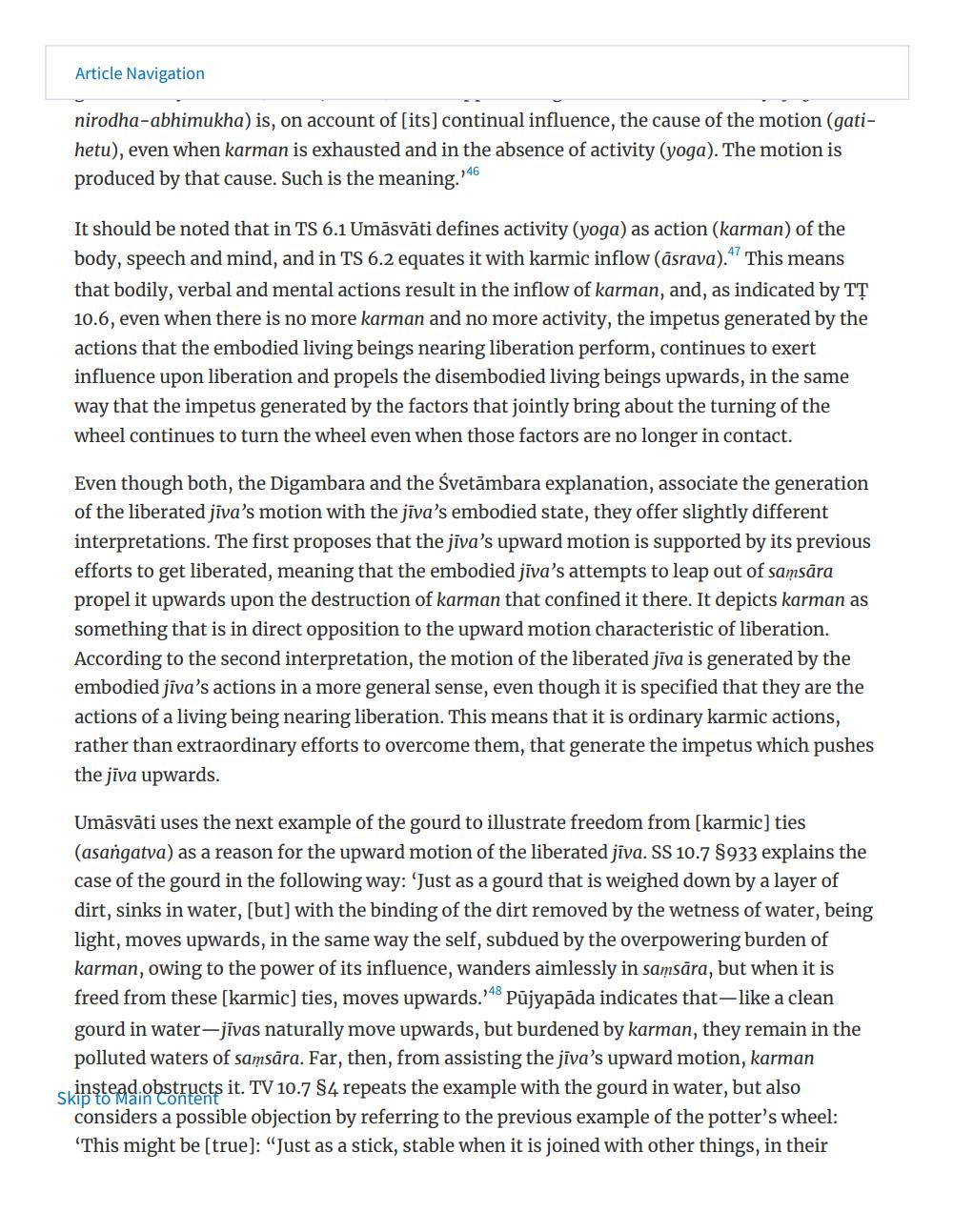Book Title: Jaina Philosophers On Nature Of Liberation Author(s): Publisher: Unknown View full book textPage 8
________________ Article Navigation nirodha-abhimukha) is, on account of (its] continual influence, the cause of the motion (gatihetu), even when karman is exhausted and in the absence of activity (yoga). The motion is produced by that cause. Such is the meaning.946 It should be noted that in TS 6.1 Umāsvāti defines activity (yoga) as action (karman) of the body, speech and mind, and in TS 6.2 equates it with karmic inflow (āsrava). This means that bodily, verbal and mental actions result in the inflow of karman, and, as indicated by TT 10.6, even when there is no more karman and no more activity, the impetus generated by the actions that the embodied living beings nearing liberation perform, continues to exert influence upon liberation and propels the disembodied living beings upwards, in the same way that the impetus generated by the factors that jointly bring about the turning of the wheel continues to turn the wheel even when those factors are no longer in contact. Even though both, the Digambara and the Svetāmbara explanation, associate the generation of the liberated jīva's motion with the jīva's embodied state, they offer slightly different interpretations. The first proposes that the jiva's upward motion is supported by its previous efforts to get liberated, meaning that the embodied jīva's attempts to leap out of samsāra propel it upwards upon the destruction of karman that confined it there. It depicts karman as something that is in direct opposition to the upward motion characteristic of liberation. According to the second interpretation, the motion of the liberated jīva is generated by the embodied jīva's actions in a more general sense, even though it is specified that they are the actions of a living being nearing liberation. This means that it is ordinary karmic actions, rather than extraordinary efforts to overcome them, that generate the impetus which pushes the jiva upwards. Umāsvāti uses the next example of the gourd to illustrate freedom from (karmic) ties (asangatva) as a reason for the upward motion of the liberated jīva. SS 10.7 $933 explains the case of the gourd in the following way: 'Just as a gourd that is weighed down by a layer of dirt, sinks in water, [but] with the binding of the dirt removed by the wetness of water, being light, moves upwards, in the same way the self, subdued by the overpowering burden of karman, owing to the power of its influence, wanders aimlessly in samsāra, but when it is freed from these [karmic) ties, moves upwards.'48 Pūjyapāda indicates that-like a clean gourd in water-jīvas naturally move upwards, but burdened by karman, they remain in the polluted waters of samsāra. Far, then, from assisting the jiva's upward motion, karman s instead obstructs it. TV 10.7 84 repeats the example with the gourd in water, but also considers a possible objection by referring to the previous example of the potter's wheel: This might be (true): "Just as a stick, stable when it is joined with other things, in theirPage Navigation
1 ... 6 7 8 9 10 11 12 13 14 15 16 17 18 19 20 21 22 23 24 25 26 27 28 29
